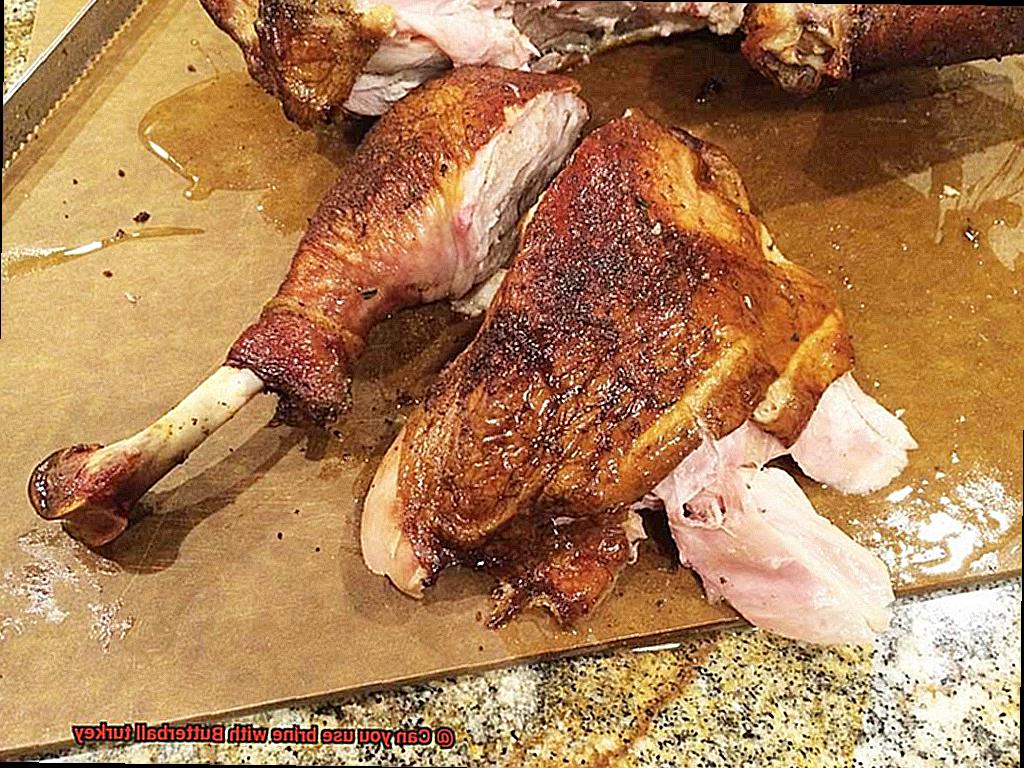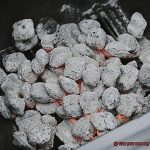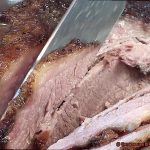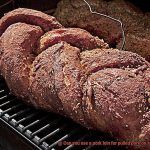It’s time to start thinking about the star of the show: the turkey. If you’ve opted for a Butterball turkey this year, you might be wondering if it’s safe to brine it. Brining is a popular method of adding flavor and juiciness to meat by soaking it in a saltwater solution for several hours or overnight. But fear not, Butterball fans. You can absolutely brine your turkey.
Butterball turkeys are already infused with a blend of water, salt, and other natural flavors that make them tender and delicious straight out of the packaging. Brining will only enhance these flavors and add an extra layer of moisture to your bird. Just be sure not to overdo it – too much salt can turn your turkey into a salty, mushy mess.
In this post, we’ll dive into the art of brining and give you step-by-step instructions on how to do it right with your Butterball turkey. We’ll cover different brine ingredients and methods so you can customize your bird to suit your taste preferences.
Whether you’re a seasoned Thanksgiving pro or a first-timer in the kitchen, we’ve got you covered. Get ready to take your Butterball turkey game up a notch.
Contents
What is Brining?
Brining is a culinary technique that has been around for centuries and is used to enhance the flavor and texture of meat. Essentially, it involves soaking the meat in a saltwater solution, which can also include sugar, herbs, and spices. Brining is an excellent way to add moisture, tenderness, and flavor to meat, making it a popular choice for grilling or roasting.
There are two different methods of brining: wet brining and dry brining. Wet brining involves submerging the meat in a saltwater solution for several hours or overnight, while dry brining involves rubbing the meat with a mixture of salt and other seasonings and letting it sit uncovered in the refrigerator for several hours or overnight.
One of the most common questions people have when it comes to brining is whether or not they can use it with a Butterball turkey. The answer is yes. However, since Butterball turkeys are pre-basted with a solution that already includes salt, it’s important to adjust the amount of salt in your brine accordingly. A good rule of thumb is to use about half as much salt as you normally would for a non-basted turkey.
Brining your Butterball turkey can take things to another level by adding even more flavor and moisture to an already juicy and flavorful bird. By letting the turkey soak in a delicious saltwater solution, you can ensure that every bite is packed with goodness. Moreover, brining helps prevent the turkey from drying out during cooking, resulting in tender and succulent meat that your guests will love.
Can You Use Brine with Butterball Turkey?
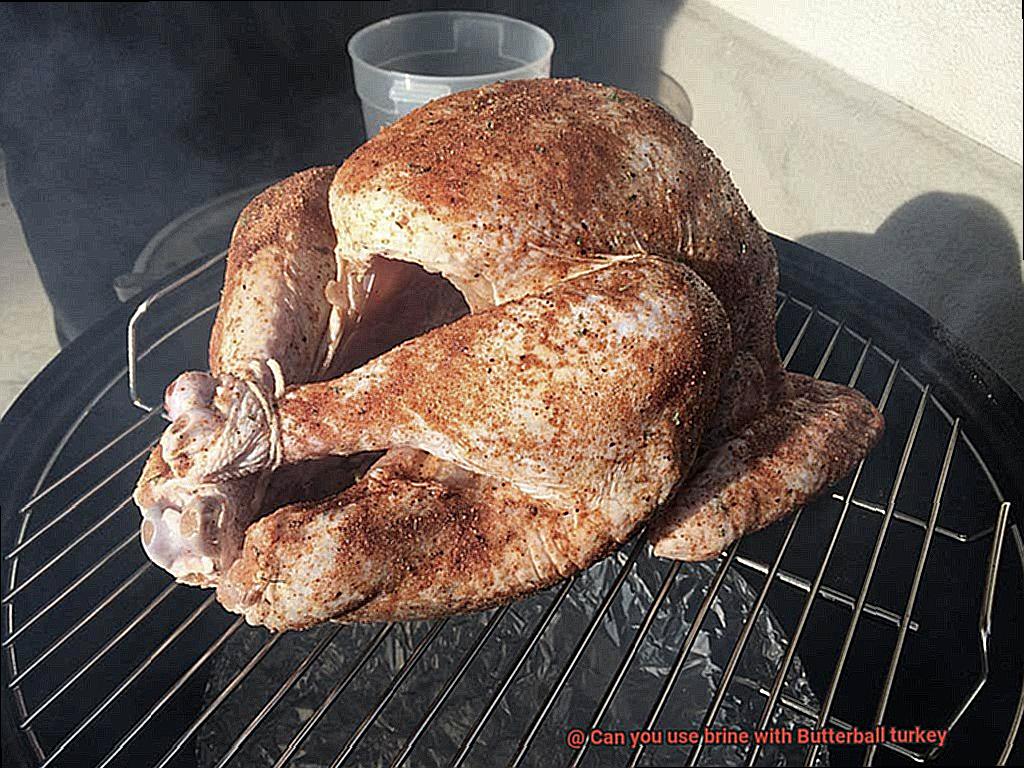
This common technique can add moisture, tenderness, and flavor to any poultry dish, and Butterball turkeys are no exception. So, can you use brine with a Butterball turkey? Absolutely.
In fact, Butterball themselves recommend brining their turkeys for optimal flavor and juiciness. Brining helps to keep the bird moist during cooking while enhancing its natural taste.
To get started, make sure your turkey is fully thawed in the refrigerator before brining. Then, prepare your brine solution by dissolving salt and sugar in water and adding any desired spices. Submerge the turkey in the solution for at least 8 hours, or up to 24 hours for larger birds. Rinse the turkey thoroughly after brining and pat it dry before cooking.
One thing to keep in mind is that Butterball turkeys are already pre-basted with a solution that includes salt. As a result, you may want to adjust the amount of salt in your brine accordingly. Additionally, if you choose to use a pre-made brine mix, be sure to read the label for any added salt or seasoning.
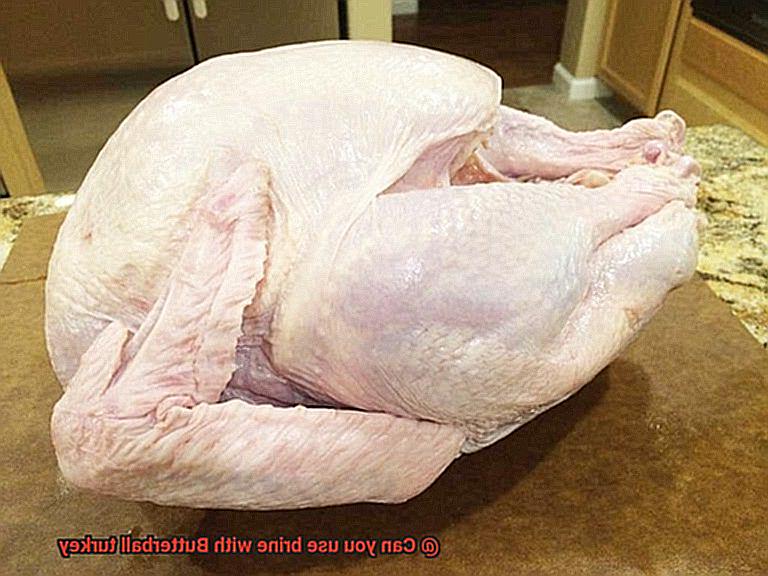
Benefits of Brining a Butterball Turkey
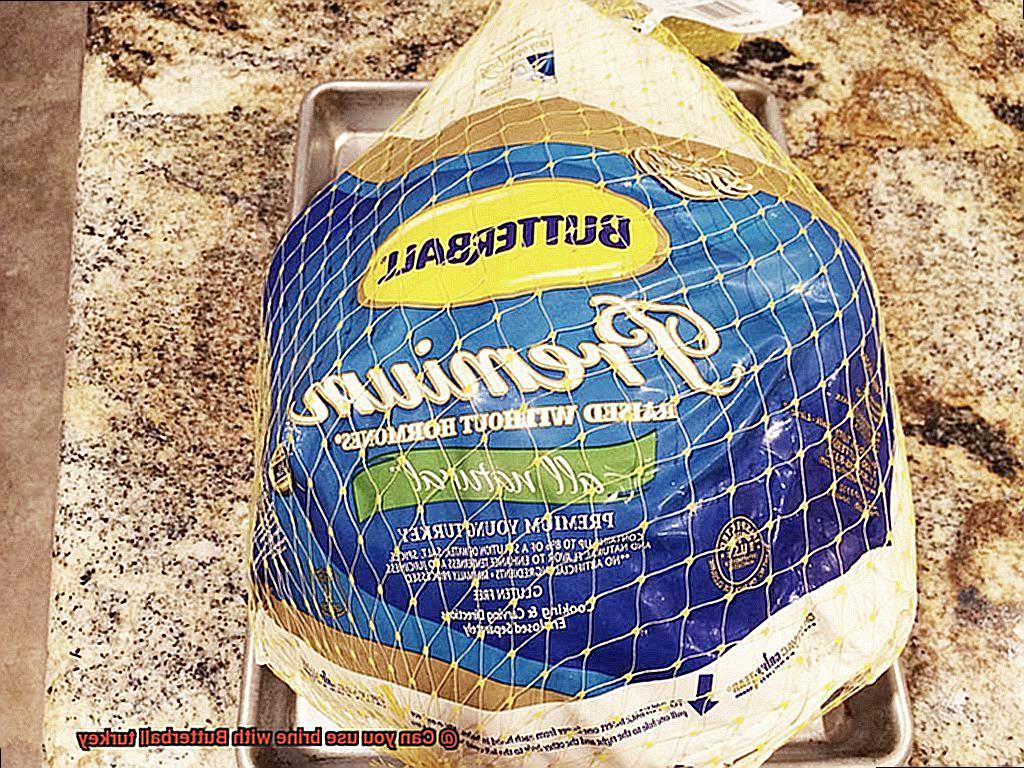
This time-tested technique involves soaking the turkey in a solution of salt, sugar, and spices, and the benefits are truly endless.
Firstly, brining is a game-changer when it comes to preventing your Butterball turkey from drying out during cooking. While these turkeys are already known for their succulent and tender meat, brining allows the meat to absorb even more moisture. This means less chance of a dry turkey on your holiday table.
Secondly, brining can take the flavor of your Butterball turkey to the next level. As you season the meat from the inside out with salt and sugar, you can add herbs and spices to customize the flavor to your liking. The result is a bird that is bursting with savory deliciousness.
Thirdly, brining can even help reduce cooking time. The extra moisture in the meat allows it to cook faster than an un-brined bird. This is especially handy if you’re short on time or oven space.
Finally, brining ensures even cooking throughout your Butterball turkey. No more worrying about dry spots or undercooked areas – brining helps distribute moisture evenly so that every bite is as scrumptious as the last.
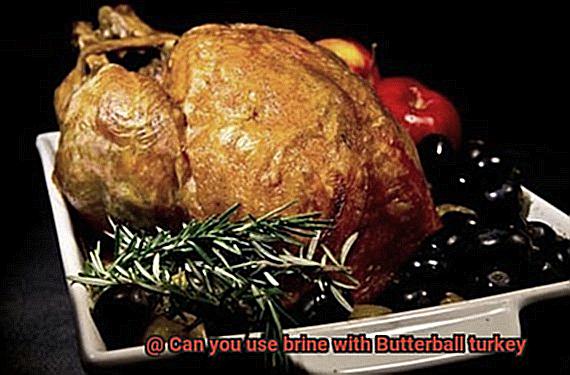
Adjusting the Salt in Your Brine Solution for a Butterball Turkey
A perfectly seasoned and succulent Butterball turkey is the centerpiece of any holiday feast, and brining is a great way to achieve this. However, when it comes to brining a Butterball turkey, adjusting the salt content in your brine solution is a crucial factor that requires careful consideration.
As an expert on this topic, let me guide you through the process. Firstly, it’s important to note that Butterball turkeys are pre-brined during processing, which means they already contain salt. Therefore, before you start preparing your brine solution, you must check the sodium content listed on the packaging to determine how much additional salt you need to add.
Once you have this information, you can calculate how much salt to use in your brine solution. A general rule of thumb is 1/2 cup of kosher salt per gallon of water for a standard brine solution. However, if your turkey has already been pre-brined, you should reduce the amount of salt in your brine solution by about half.
For example, if your turkey contains 500mg of sodium per serving, you would only use 1/4 cup of kosher salt per gallon of water instead of the standard 1/2 cup. This way, you can prevent your turkey from becoming overly salty while still ensuring that it’s flavorful and tender.
It’s important to note that reducing the amount of salt in your brine solution may impact the overall taste and texture of the meat. Therefore, it’s crucial to find the perfect balance for your particular Butterball turkey. Here are some tips to help:
- Experiment with different amounts of salt until you find the right balance for your tastes.
- Consider adding herbs and spices to enhance the overall flavor of your turkey.
- Brine your turkey for at least 12 hours for optimal flavor and tenderness.
Is It Necessary to Brine a Butterball Turkey?
As an expert in all things poultry, I’m here to help you make an informed decision on this age-old debate.
Brining is the process of soaking a turkey in a saltwater solution for several hours before cooking. This helps the bird retain moisture during cooking and adds flavor to the meat. However, when it comes to Butterball turkeys, the answer to the question of whether or not to brine is not as straightforward.
Butterball turkeys are already pre-basted with a solution containing salt, spices, and flavorings. This means that they are already seasoned and tenderized right out of the packaging. So technically speaking, it is not necessary to brine a Butterball turkey. However, there are still reasons why you might want to consider it.
For one thing, brining can help enhance the flavor and texture of the turkey even further. By adding additional flavors and seasonings to the brine solution, you can create a more complex and delicious bird. Brining can also help your Butterball turkey retain even more moisture during cooking, resulting in a juicier and more flavorful final product.
That being said, there are some caveats to keep in mind if you do decide to brine your Butterball turkey. First of all, because Butterball turkeys are already pre-basted with a salt solution, you need to adjust the salt content in your brine accordingly. Be sure to check the packaging for sodium content and adjust your recipe accordingly.
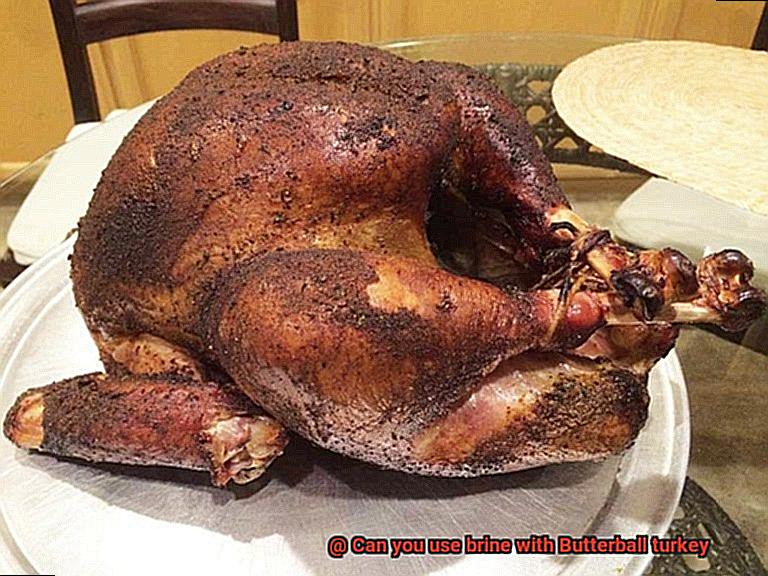
Secondly, brining takes time and effort. If you’re short on time or simply don’t feel like dealing with the extra step, you can still achieve great results with a pre-basted Butterball turkey.
Tips for Cooking a Perfectly Delicious Butterball Turkey without Brining
There is no better way to celebrate the holiday than with a perfectly cooked Butterball turkey. While some may opt to brine their turkey, it is not necessary to achieve a delicious result. Here are five tips for cooking a perfectly delicious Butterball turkey without brining.
Start with a High-Quality Turkey
Choosing a high-quality Butterball turkey ensures that you’re starting with the best possible foundation for your meal. Whether you opt for a fresh or thawed bird, make sure to check for any giblets or neck pieces inside the cavity before cooking.
Season the Turkey Well
Seasoning your Butterball turkey with a mixture of herbs, spices, and butter helps to add flavor and moisture to the meat. Rub the seasoning mixture all over the turkey, including under the skin and inside the cavity.
Additionally, placing aromatic vegetables like onions, carrots, and celery inside the cavity can enhance the flavor of your bird.
Use a Meat Thermometer
Cooking your Butterball turkey to the right temperature is crucial for achieving juicy and flavorful meat. Use a meat thermometer to ensure that the thickest part of the bird reaches 165°F. Basting your turkey with its own juices or melted butter during cooking can also help keep it moist and flavorful.
Baste Frequently
Basting your Butterball turkey with butter or oil will help keep it moist while it cooks. You can baste the turkey every 30 minutes or so to ensure that it stays juicy and flavorful.
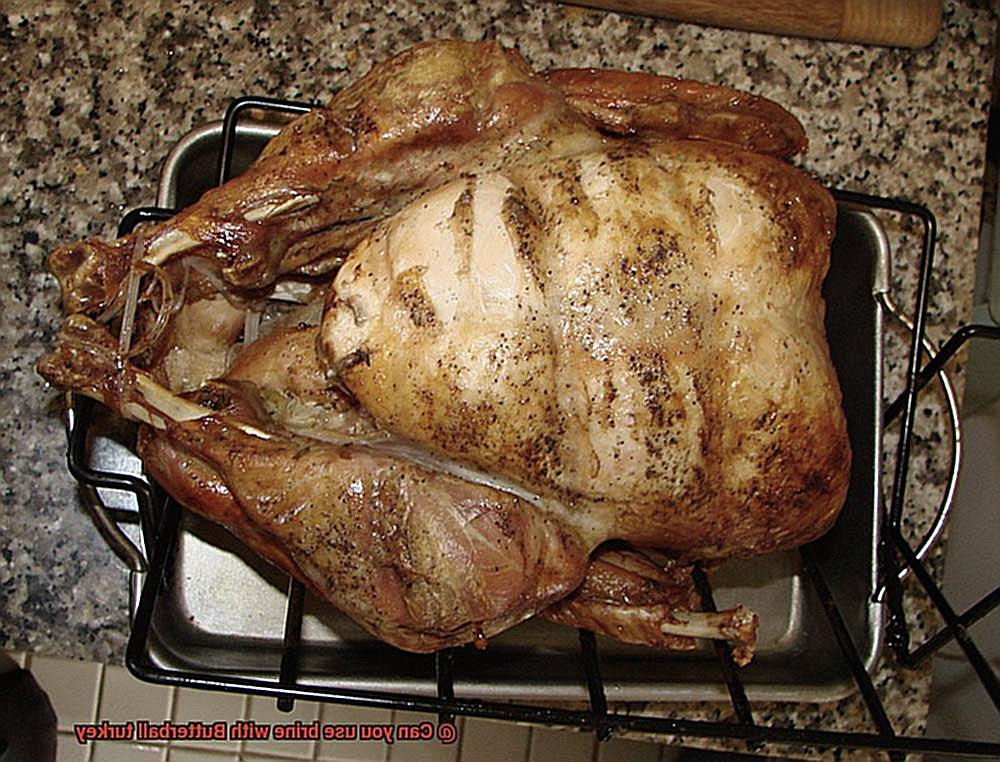
Additionally, basting adds a layer of flavor to your bird that cannot be achieved through brining.
Let It Rest
Once your Butterball turkey is cooked, let it rest for at least 15-20 minutes before carving. Allowing your bird to rest lets the juices redistribute throughout the meat, resulting in a juicier and more flavorful bird. Cover the turkey with foil to keep it warm while it rests.
oul1GoWXrOQ” >
Conclusion
To sum it up, brining a Butterball turkey is an excellent way to elevate its natural taste and juiciness. Although these turkeys come pre-basted with a salt solution, adding extra layers of flavor and moisture through brining can take your dish to the next level. However, it’s crucial to adjust the amount of salt in your brine to prevent over-salting.
If you opt not to brine, don’t worry. There are still many ways to achieve a mouth-watering Butterball turkey. Using top-quality ingredients, seasoning your bird well, monitoring the temperature with a meat thermometer, basting regularly, and letting it rest before carving are all critical elements in cooking a perfect turkey.
Regardless of whether you choose to brine or not, what matters most is enjoying the process of cooking and relishing the flavors of this cherished holiday dish.
With these tips in mind, you’ll undoubtedly impress your loved ones with a delectable Butterball turkey that will linger on their taste buds long after Thanksgiving has passed.

